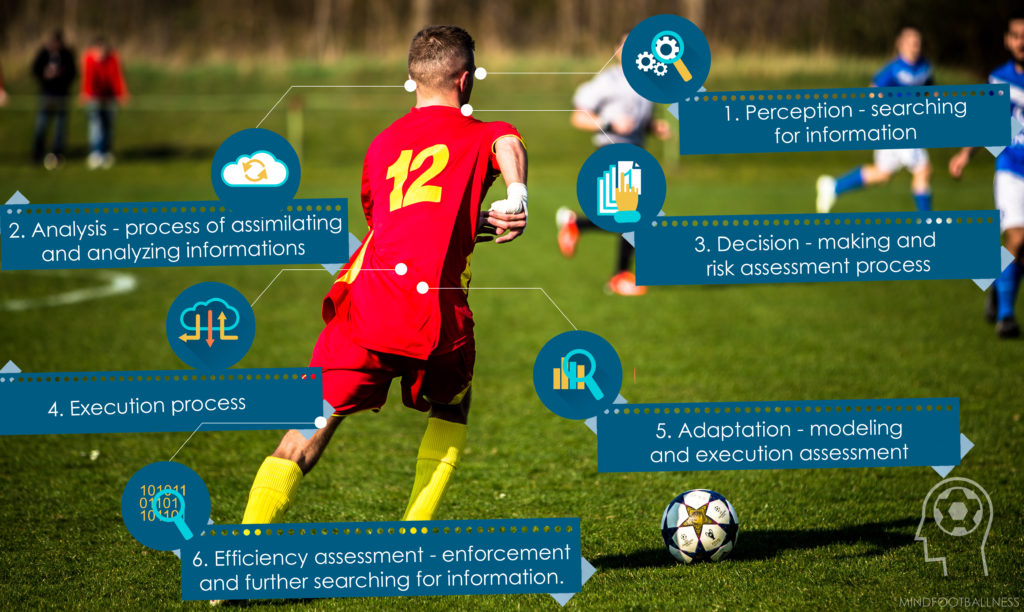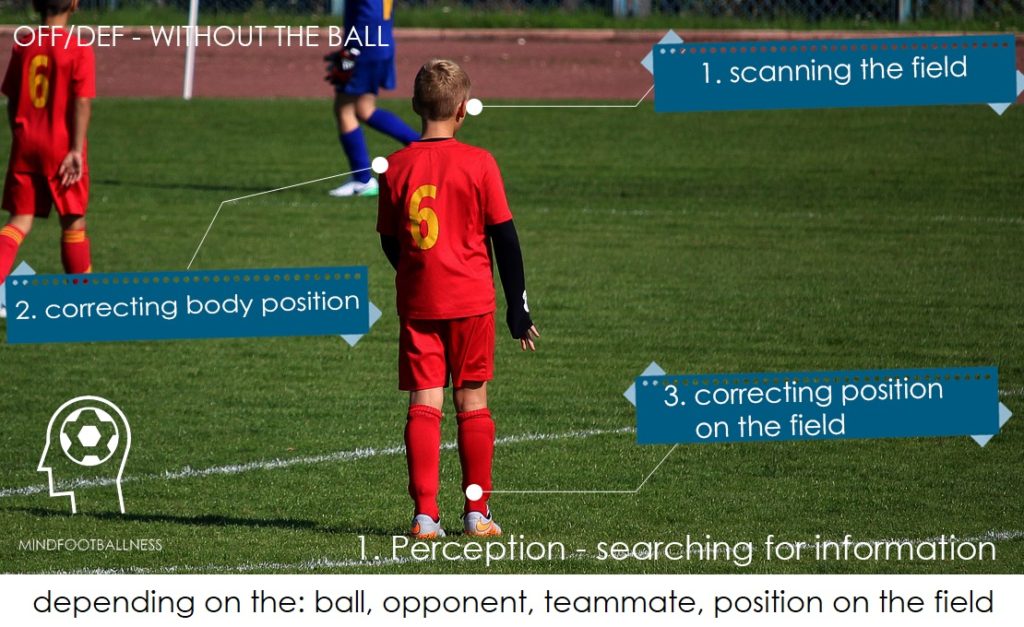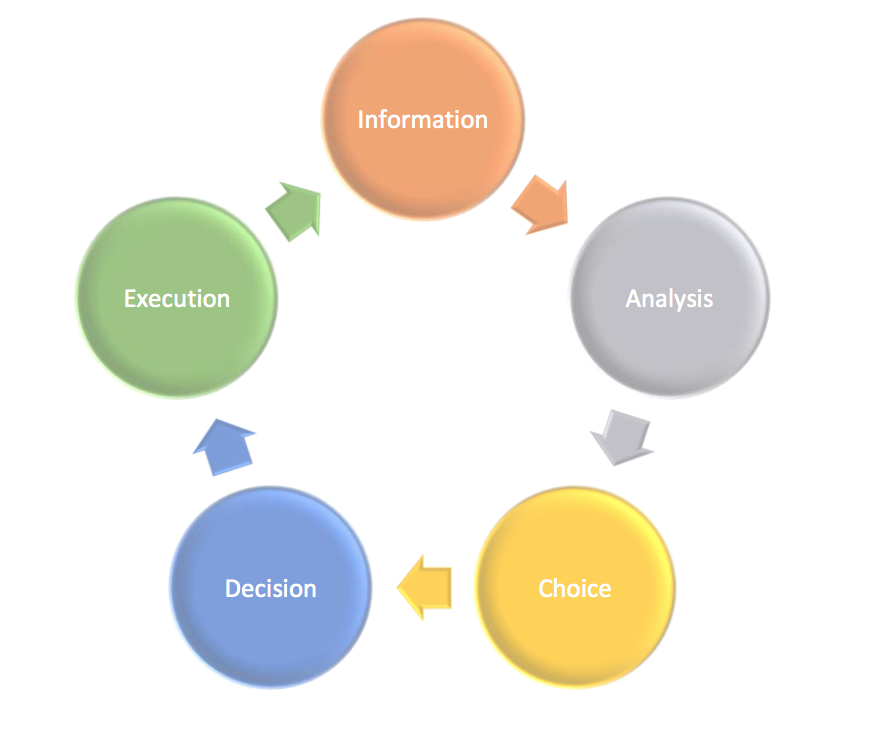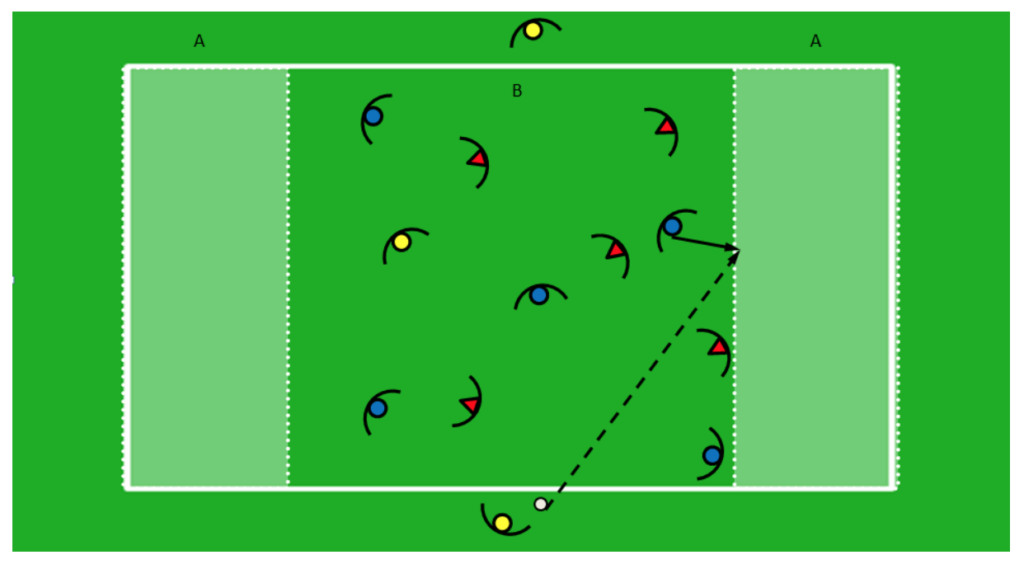Overview
The following post has been written by Slawek Morawski, the owner of the great project called Mindfootballness.
I agreed to provide him with the opportunity to leverage on Rondos to get his message to more people, as there´s no much literature yet on a fascinating topic: Cognitive development of football players.
1
Cognitive Process During the Game
Consciously or not, every player that is part of the team, during the game faces many opportunities that demands decision from him. Decision that is fast and correct, that brings as much advantage to the team as possible.
Everything starts from what the player sees. Not from what he looks at.
What is this decision based on? How to train the process that leads to correct decision and creates responsible, creative, independent and self-confident player? If you are aware, there is no place to fear. Should we work then from “inside to outside”, or from “outside to inside”? It is clear that training conditions should be as similar to the match conditions as possible.
The basis of the decision process is information. The time, quality and frequency of gained information is a key in this process.
Constantly moving, player must be aware of which direction and part of the field he should control in the moment. That is perception, a process, sense of awareness, registration of the object or external environment that is in our field of sight, and adoption by awareness.
Understanding, identification and preparation for reaction to a stimulus. However the structure of our field of view is limited, and separates into:
Everything starts from what the player sees. Not from what he looks at. Gaining the information, and reducing the blind zone should be performer by few steps:
1) Scanning the field
Collecting information by moving head, „checking shoulders”, „taking pictures”. Player gathers information from surroundings.
2) Correcting body position
Player changes his body orientation (open/closed) to see advantage on the field, „ball and other side of the ball”, direction of the game.
3) Correcting position on the field
Maintaining amplitude, shape dictated by structure and formation, ball placement.”, direction of the game.
2
Types of information on the field
Offense
– Ball
– Where is the space with advantage (free space, numerical balance)
– Where are opponents
– Where are teammates
– Position in the structure
Defense
– Ball
– Where are opponents (distance to control, between goal and attackers)
– Where are teammates
– Which space is more important to defend
– Position in the structure
Based on received information, player must assimilate and analyze them in relation to his taken position, principles and recommendations of the team, assessment of the risk and which solution will bring the biggest advantage for the team. For example: If teammate is under pressure with the ball, player should support to create progress or rescue? What pieces of information are crucial?
If teammate is under pressure, player with the ball should pass to further leg from pass or from opponent? What information is the most important here? It’s all about being aware.
All this content seems to be quite easy to remember and use during the game, however sometimes the easiest way seems to be the most difficult to use. How much you know is the one, but how you will use it is the other thing. Very often coaches are just satisfied by the fact their players are keeping their head up with the ball or checking their shoulders without the ball. As a coach I very often experienced that players were answering me „I should show up myself on the position” or „I should move behind the defender to support my teammate”. It is not enough.
Cognitive Process is one of the most difficult pieces of content to develop.
Cognitive process is one of the most difficult content to develop, because it’s happening individually inside the head of each player. All we can do as coaches is to replicate the situations that are troublesome for the players during the game. Situations where defenders are set in a double-meaning opportunities, where they need to control more than one aspect of the game.
Where attackers must decide if they will provide support with progress or to help the teammate under pressure. Even the leg they will use to control the pass or run with the ball matters. The direction they will choose to create attack. All these situations are demanding as much awareness about conditions as possible. Those details matters. An aspect that makes the difference between the good and the best players, is decision.
3
Sample Game
Training content: PERCEPTION
Rules
- Game 5v5+3 in the B ZONE
- Goal can be scored by controlling the pass in A ZONE [direction offense – defense]
- Team with the ball must circulate the ball from one to another side of field with neutral player while defending, team without the ball must set the structure in 2-3.
Recommendations
- While defending, try to set your body between the opponent and goal (A ZONE)
Concept
- Without the ball, set your body in a position and place that allows you to control the ball and nearest opponent / teammate – get the information
Relevant Questions
- Which body orientation can allow you to see the space with advantage?
- What else can you do to control and know more about the ball and opponent?
Ex Google | Real Madrid Youth Academy (Tactical Analyst & Administration of Academy) | Master in Talent Development in Football (Escuela de Real Madrid)| Certified Coach (Argentina & Federación Catalana de Fútbol) | Follow me on Twitter & LinkedIn (@juliangenoud). Escribime a juliangenoud-at-gmail.com





